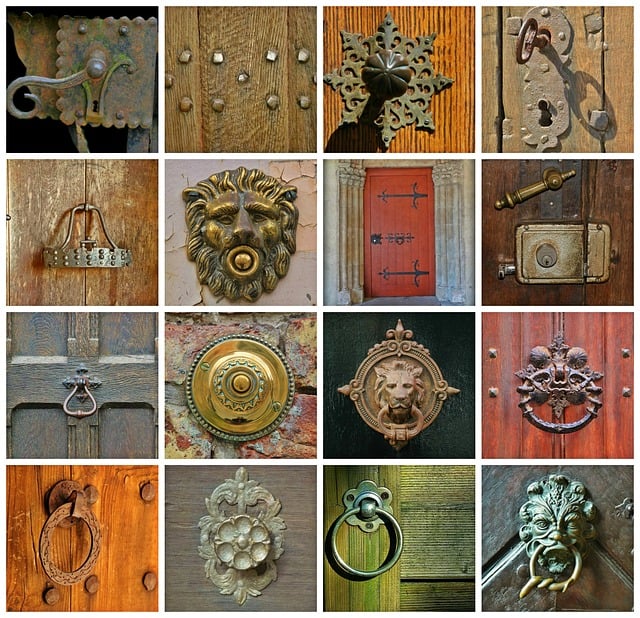In today's world, traditional doors often lack sufficient strength and durability for robust security. Reinforced door installations address these issues by integrating sturdy panels and strengthened corners, enhancing structural integrity. Key benefits include superior protection against intruders, resistance to harsh environmental conditions, and peace of mind for property owners. Modern anti-pry doors use high-strength materials like steel and aluminum alloys, with specialized construction techniques like welding and bolting to ensure equal security across the entire door structure. These advanced designs offer unparalleled sturdiness and longevity, especially in high-traffic areas or extreme weather conditions, providing a strong barrier of protection for both residential and commercial spaces.
In today’s world, security is paramount, especially when it comes to doors. The need for reinforced door installation has become increasingly crucial, driving the development of innovative anti-pry door designs. This article delves into this advanced security solution, exploring its key features, construction techniques, and substantial benefits. We’ll guide you through understanding the importance of reinforced panels and corners, and offer best practices for implementing these robust doors, ensuring enhanced safety and peace of mind.
Understanding the Need for Reinforced Door Installation
In today’s world, where security is a top priority for both residential and commercial spaces, the need for robust and reinforced door installations has become increasingly critical. Traditional doors often fall short in terms of strength and durability, leaving them vulnerable to forced entries or extreme weather conditions. This is especially true for high-traffic areas or regions prone to natural disasters. A reinforced door installation addresses these concerns head-on by integrating sturdy panels and strengthened corners, significantly enhancing the overall structural integrity of the door.
The benefits of reinforced doors are multifold. They act as a solid defense against potential intruders, ensuring that homes and businesses remain secure. Moreover, these doors can withstand harsh environmental conditions, such as strong winds or heavy rainfall, without compromising their structure. With reinforced door installations, property owners can rest assured that their spaces are better protected, providing peace of mind in an often unpredictable world.
Key Features of Anti-Pry Door Design
The anti-pry door design is a robust and innovative approach to enhancing security, particularly in public spaces where doors are prone to forced entry attempts. A key feature lies in its reinforced panels, strategically placed to resist prying and breaking. These panels are designed to absorb impact and distribute force, making it significantly harder for intruders to gain unauthorized access.
Additionally, the corners of such doors are also reinforced, adding an extra layer of protection. This reinforced door installation method strengthens the overall structure, ensuring that even with intense force applied, the door remains secure. The design’s simplicity and effectiveness make it a popular choice for commercial buildings, schools, and other institutions where safety is paramount.
Materials and Construction Techniques
In the realm of reinforced door installations, modern anti-pry door designs employ a blend of robust materials and innovative construction techniques to enhance security. The doors are typically crafted from high-strength steels and aluminum alloys, which offer superior resistance against forced entry attempts, such as prying or breaking.
Specialized construction methods involve welding and bolting reinforced panels into the door’s framework, ensuring each corner is equally secure. This meticulous approach fortifies the entire structure, making it considerably more difficult for potential intruders to gain unauthorized access. The use of advanced materials and precise fabrication techniques contributes to a robust barrier that stands as a game-changer in residential and commercial security solutions.
Benefits of Using Reinforced Panels and Corners
In the pursuit of enhanced security, reinforced door installations have emerged as a robust solution, offering an array of advantages. The strategic use of reinforced panels and corners in door design provides an unprecedented level of strength and durability. This innovation is particularly valuable in high-traffic areas or regions prone to extreme weather conditions, ensuring doors can withstand intense force and environmental stresses without compromising integrity.
The integration of reinforced elements significantly improves the overall structural stability of doors. By enhancing corner support, these designs prevent door frames from bowing or bending over time, maintaining alignment and preventing unauthorized access. Moreover, reinforced panels act as a formidable barrier against forced entry attempts, providing peace of mind for homeowners, business owners, and facility managers alike.
Best Practices for Implementing Anti-Pry Doors
Implementing anti-pry doors involves a few key best practices for enhanced security. Firstly, ensure proper reinforced door installation by using high-quality hardware and materials specifically designed to resist prying forces. This includes robust hinges, reinforced panels, and corner supports that are securely fastened. Professional installation is crucial to guarantee the door’s integrity and prevent any weak points that could be exploited.
When integrating anti-pry doors into your security system, consider factors like door placement, access control, and regular maintenance. Strategically positioning these doors in high-risk areas can significantly deter unauthorized access. Additionally, implementing a robust access control system, such as keycards or biometric readers, ensures that only authorized individuals can enter secure spaces. Regular inspections and maintenance checks are vital to promptly identify any signs of wear and tear or potential vulnerabilities, thus maintaining the door’s anti-pry capabilities over time.
The implementation of anti-pry door designs with reinforced panels and corners is a proactive step towards enhancing security measures. By understanding the vulnerabilities posed by forced entry attempts, this article has highlighted the key features, materials, and best practices for an effective reinforced door installation. These doors not only fortify structures against potential threats but also offer peace of mind, ensuring homes and businesses remain secure. When considering reinforced door installation, it’s clear that the benefits far outweigh the costs, making these doors a smart investment in safety.
